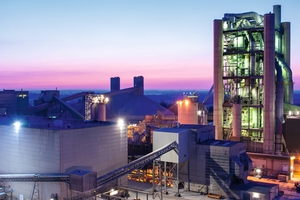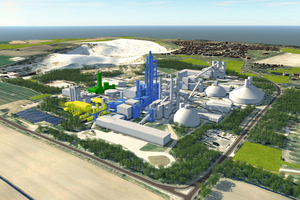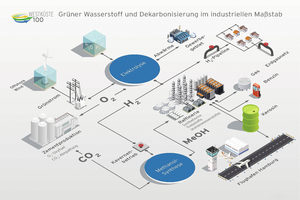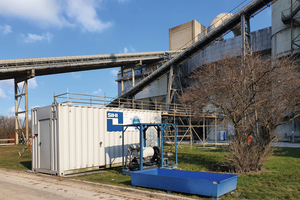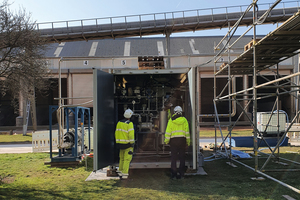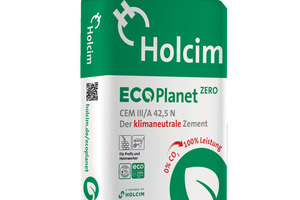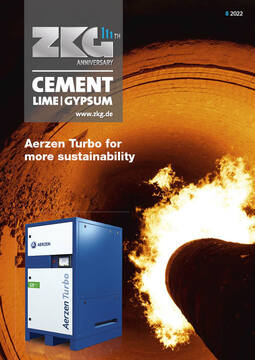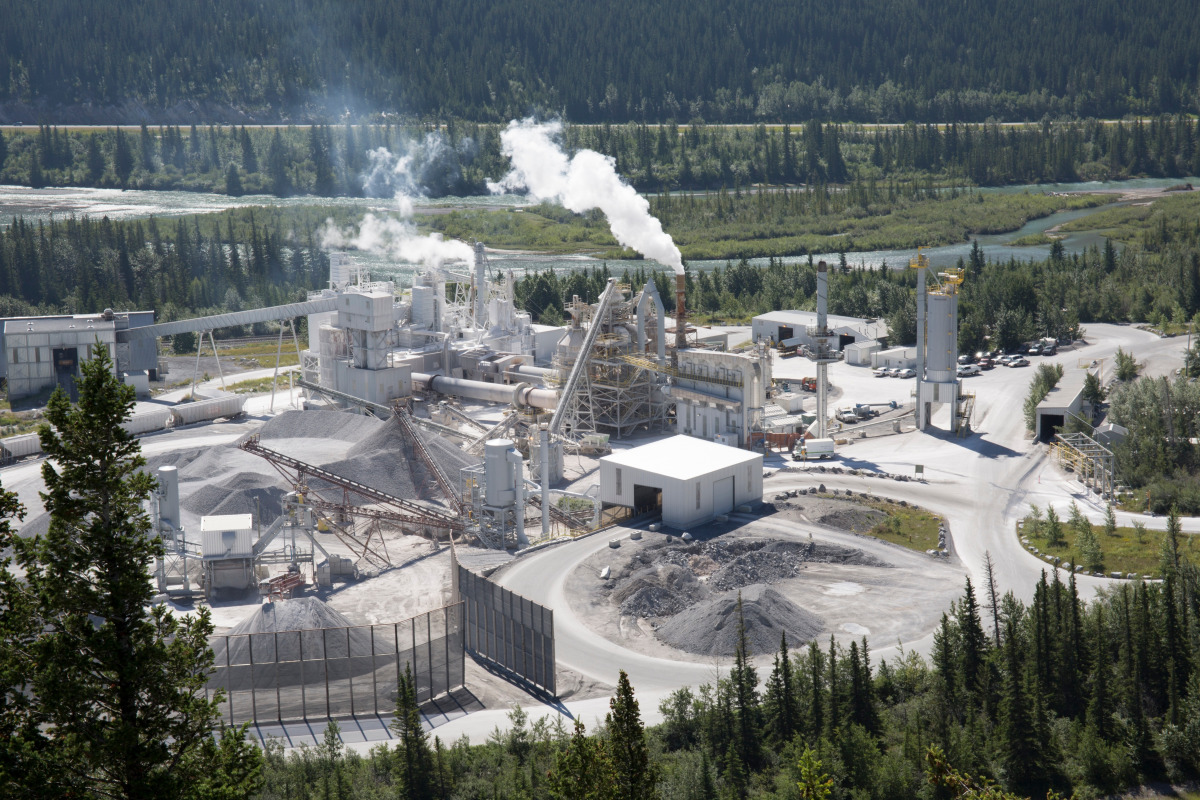On the road to the climate-neutral company
The CO2 footprint of the building-materials industry is of very significant magnitude. Holcim is playing a leading role in climate-neutral transformation. The declared objective: Climate neutrality. And Holcim is working consistently on reducing the CO2 footprint of its plants, products and solutions. Climate neutrality along the entire value chain is an important element. Innovative products and solutions now make it possible to build faster and more efficiently while at the same time reducing the effects on the environment.
Climate neutrality along the entire value chain is an important element. Innovative products and solutions now make it possible to build faster and more efficiently while at the same time reducing the effects on the environment.
Sustainable building also includes resources efficiency and thinking in materials cycles and the life-cycles of the structures built, however. All players are therefore enjoined to make their contribution to climate protection and resources efficiency.
Decarbonisation of the cement industry
No cement = no concrete. The principal concepts for the reduction of CO2 emissions in cement production have up to now looked like this: boosting of the efficiency of the use of thermal and electrical energy, replacement of the burnt intermediate product, cement clinker, by substitutes that will in future also originate from demolition of buildings, and the replacement of fossil fuels via the energy-route recycling of alternative fuels that include a percentage of biomass content. Changes to the product portfolio of cements, concretes and prefabricated concrete components will be vital in order to promote sustainable building and reduce the industry’s CO2 footprint. Reduction of the CO2 content of concretes has not yet reached its technological limits, but standards and binding specifications prevent the exhaustive exploitation of the existing potentials.
Compensation as a transitional solution
At present, the only course at the product level is therefore best possible optimisation of formulations, and compensation for the still unavoidable CO2 emissions that result from the cement-making process by supporting various certified environmental projects. In the case of Holcim’s climate-friendly cements and concretes, such as EcoPlanet Zero and EcoPact Zero, for example, this is accomplished by the acquisition of so-called MoorFutures certificates. MoorFutures promotes rewetting projects for wetlands in various federal states, since wetland is, at present, the largest and most effective carbon absorber on Earth.
Supra-sector solutions and new technologies
Compensation alone is not sufficient to convert cement production to sustainability and achieve climate neutrality – two thirds of the CO2 occurring result from the feed material as a result of the process used for burning of cement clinker. New carbon-capture technologies and supra-sector solutions will be needed to lower cement production’s emissions even further – alliances, for instance, between the fields of green energy, hydrogen production, heat, the mineral resources industry and mobility. The supra-industry partnership Westküste100 was formed in the federal state of Schleswig-Holstein in 2019. The participants here are Hynamics Deutschland (EDF group), Holcim Deutschland, OGE, Ørsted, the Raffinerie Heide refinery, the Stadtwerke Heide municipal services, thyssenkrupp Industrial Solutions and Thüga, as well as the Region Heide development agency and the FH Westküste University of Applied Sciences. The partners’ aim is the production of green hydrogen from offshore wind energy and the utilisation of waste-heat generated in this process.
The scope of the project includes the drafting of two comprehensive studies conducted at the Lägerdorf cement plant for the preparation of investment projects for conversion to a so-called second-generation oxyfuel process. Holcim and its technology partners thyssenkrupp Industrial Solutions and Linde investigated here the technical and economic feasibility of downstream CO2 removal, preparation, and forwarding for subsequent methanol synthesis. During the summer of 2020, Westküste100 received funding approval from the federal ministry of economic affairs. The special and innovative feature of this living-laboratories project is the meshing of a range of different materials cycles within an already existing regional infrastructure. The decarbonisation of industry, mobility and the heat market is initially to be tested in the living-laboratories of the energy turnaround until 2025 and then scaled up to achieve a commercial-size industrial solution by the end of this decade.
The first climate-neutral cement plant by 2029
Scaling-up is proceeding under the name “HySCALE100” and takes the form of an independent project in which Holcim is one of a total of four participants. The focus here is on the commercial-scale production of hydrogen and green methanol synthesis for decarbonisation of the value chain of two major industries – petrochemicals and cement – thus addressing significant climate-protection targets and at the same time contributing to the at present urgently needed energy independence. Last year, the Federal Ministry for Economic Affairs and Energy and the Federal Ministry of Transport and Digital Infrastructure qualified the joint project application submitted by Holcim Deutschland and project partners Hynamics Deutschland, Ørsted and Raffinerie Heide for the next process stage within the scope of the European IPCEI (Important Project of Common European Interest) initiative. HySCALE100 is thus one of the few projects in Germany whose contents have been evaluated by the ministries and for which evaluation at European level has been prepared.
Agreement to funding is anticipated by the end of the present year. The precondition for the implementation of the project will be the conversion of the Lägerdorf cement plant to the above-mentioned oxyfuel technology, the use of which promises extremely encouraging results on the basis of the feasibility studies performed in the context of the Westküste100 project. The basic principle of the second-generation oxyfuel process involves the use of pure oxygen to produce in cement production a CO2-enriched waste-gas. At Lägerdorf, the surplus oxygen (O2) yielded in production of green hydrogen is in future to be fed in the cement plant into the combustion process. Nearly 100% of CO2 emissions in cement production will thus be eliminated. The waste-gas will then be further processed to produce a high-purity CO2 gas as the feed material for the chemicals industry and also used as a feedstock for other industries. The term applied here is “carbon capture and utilisation” (CCU).
A new kiln line is to be installed at the Lägerdorf plant to permit the planned conversion to the oxyfuel process. Total costs in the three-digit million range are anticipated. For this reason, Holcim Deutschland, in close coordination with its parent company, submitted for Lägerdorf as early as 2021 an expression of interest, via the project application “Carbon 2 Business”, for funding from the EU Innovation Fund. The agreement for funding was issued by the European Union in the summer of 2022. After the completion of this project, Holcim will, at the Lägerdorf cement plant, be operating within a few short years one of the world’s first net-zero cement plants – the company’s declared objective.
The search for the best technology
Holcim intends to play a leading role in decarbonisation and underlines this aim with specific developments – and not only at Lägerdorf, but also with the construction of a carbon-capture facility at the cement plant in Höver. Also on board will be Cool Planet Technologies Limited (CPT), a company operating in the field of sustainable technologies and focussing on low-cost CO2 capture. Also involved is the Helmholtz Center Hereon, on whose PolyActive™ membrane technology the CO2 capture plant is based.
The plant will be intended to demonstrate on a larger scale the system’s performance, cost-effectiveness and operational behaviour. The partners plan to then establish a framework for the implementation of the technology at other Holcim cement-plant locations in Germany. Because: compared to other CO2 capture technologies, this system is compact, uses significantly less energy and needs no additional chemicals for its operation. Membrane technology can, in addition, be installed and operated at low cost and is suitable for retrofitting into existing plants or can be planned directly to constitute an integral component of new facilities.
The start of this year was the kick-off signal for the commencement of trial operation. After completion of the pre-trial phase, the results were exceptionally positive, thanks to a good separation rate and a relatively high purity. The next phase of the around two-and-a-half-year research and development project recently started. A one-year active test phase, during which the system is to be studied in long-term continuous operation, is scheduled to start in September next year. If these good results are then confirmed, the system will gradually be extended and will, after the final expansion stage, be able to remove around 90% of CO2 emissions and supply a high-purity liquid CO2 for capture or for further use. Similarly to the Westküste100 project, feedstocks for the chemicals industry or e-fuels are conceivable for downstream use.
The cement plant at the Beckum location, for its part, functions as a pilot facility for CO2 capture using so-called amine scrubbing. Here, CO2 is in future to be captured at source and may later be suitable for use as a chemical resource – also, conceivably, as a sustainable fuel or in the form of methanol as a feedstock for the chemicals industry. Specifically, among other things, new mass transfer equipment which will improve efficiency and will be less susceptible to impurities is being developed. One great benefit is that this technology can be retrofitted into existing cement plants and that the construction of a new kiln line (as is required in the case of oxyfuel technology) will not be necessary. The project is receiving funding from the Federal Ministry for Economic Affairs and Climate Action.
Build more with less material
Construction using prefabricated concrete components also contributes to sustainable building. No other building method saves as much on-site time and resources – industrial but nonetheless individual and tailor-made production in the workshop is scarcely susceptible to error, the scope of the necessary transportation is reduced significantly, and there is no packaging waste requiring disposal at the site. Another solution is to further optimise the design of the components and reduce the amount of concrete needed by up to 80% while retaining the same load-bearing capacity. Thin high-performance concrete slabs can thus be produced from high-strength concrete and reinforced with prestressed carbon instead of steel. The deadweight of the structure is then drastically reduced. The additional use of low-CO2 cements cuts the CO2 content by up to 75% compared to prefabricated reinforced-concrete components produced conventionally using Portland cement.
Late last year, CPC (carbon-prestressed concrete) slabs were awarded the first National Technical Approval for carbon-prestressed concrete in Germany, allowing planners and architects to employ resources-conserving climate-friendly concrete components using CPC technology throughout the country. The approval includes a complete structural-analytical design of the CPC slabs, making it possible to design numerous components, such as stairs, balcony slabs and exterior wall claddings individually. Modular bridges can also be compiled easily and resources-conserving using CPC elements.
Buildings as sources of materials
The example of CPC demonstrates what is already possible today – provided the potentials are known to all the players along the “Construction” value chain. The interest shown by planners, architects and investors in the subject of reducing CO2 is growing rapidly. Also very important here is the raising of awareness of the significance of “reducing CO2 in components”: particularly during the construction phase, the materials used are of decisive importance for the ecological balance of buildings. It is therefore possible here to make an important contribution to increasing the CO2 efficiency of buildings and infrastructural elements throughout their life-cycle.
The building industry continues to struggle with ever-rising energy and feed materials costs. The availability of resources is, indeed, not infinite. For this reason, building in the future must adapt to circumstances, in view of the fact that more than half (in fact 60%) of all waste yielded in Germany is produced on construction sites. The urgency of the turnaround is underlined by the enormous consumption caused by the building sector: some 40% of all input materials are used there up to the end of their life-cycle, and then ultimately arrive on a landfill – and this, while these valuable materials are urgently needed elsewhere.
Circular rather than linear
Linear thinking has up to now dominated in building. More and more experts, however, now understand the system as a cycle and the city as a store of materials. “Urban Mining” is the name given to the concept of declaring existing structures to be a store of building materials, the valuable resources contained in which, after demolition, require only their reclamation and reuse. At the same time, this concept defines a reorientation in the building industry, since there will be a need, as a consequence, to create by means of building-materials databases the preconditions for corresponding materials chains. To make urban mining suitable for utilisation in practice and to permit the rational and sustainable use of such materials-databases, the setting-up and upkeep of databases listing precise quantities of recyclable materials will be necessary. The pioneer in this field is the digital registry of land and property of the Dutch Madaster foundation, in which all the necessary information on buildings and materials is stored in an online cloud platform. Holcim has been a member of Madaster since last year, with the aim of accelerating the circular economy in the building and property industry.
The high potential for utilisation of valuable mineral building waste is becoming increasingly recognised by the concrete industry. Mineral demolition materials, following thorough selection, industrial preparation and stringent quality monitoring, are now being used as substitute raw materials for the concrete industry in order to combat the increasing scarcity of natural gravel and crushed stone. These valuable urban materials – provided, for example, by demolished buildings or life-expired paving slabs and railway sleepers (railroad ties) – must not end up on a landfill but must, instead, begin a second life in the form of so-called R-concrete (resources-conserving concrete). In this way, concrete can be used to make concrete.
Time for the cement turnaround
The transformation in the industry is gaining speed and should be regarded not as an annoying obligation but rather as an exciting challenge and a great opportunity. It can only succeed if all players involved in the “Construction” value chain pull together. Standards or codes of practice may still prove problematical by frequently preventing the implementation of sustainable solutions. Here, the public sector and the politicians can help by, for example, systematically promoting the use of climate-saving products by means of modified invitation-to-tender documents. In addition, building products must be made more efficient and innovations made more quickly marketable. All in all, it must be made more economically attractive to avoid a tonne of CO2 than to emit a tonne of CO2. Then valid and sustainable business models will develop in future around CO2 as a resource in a new and innovative value chain.

